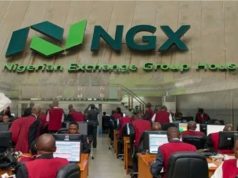By Charles Ike-Okoh
SAT, 21 NOV, 2020-theGBJournal- The Nigerian banking sector have witnessed mixed earnings results with some reporting stellar third-quarter results and while earnings of others have nose-dived significantly, driven largely by higher operating costs.
So far, only a handful has beat expectations. The mixed performance gets confirmed with reports from Unity Bank with Q3 profit after tax up 6%, FBN Holding up 1.4%, UBA down (-5.51% y-o-y), Access Bank up (+15.7%), Sterling bank’s gross earnings down (-3.28%) and GTBank pre-tax profit down (1.93% y-o-y).
The numbers doesn’t fit in the common view of difficulties but reflects the distress of banking in a pandemic era. Given this, it is reasonable to expect Q4 results roll call to provide similar evidence of the challenges of recovery post-lockdown.
The International Finance Corporation (IFC) forecast in September 2020 that the impact of the COVID-19 and oil price shocks on banks is expected to be severe and will unfold over the next 12 to 24 months.
‘’Bank valuations have already priced in NPLs of up to 30 percent and rating agencies have started to downgrade banks (Fitch Ratings 2020).’’
As IFC sees it, ‘’the decline in interest and noninterest income and the low availability of funding for credit lines, especially forex trade financing, will strain near-term liquidity and will constrain recovery.’’
Besides, the risks to the sector remain heightened as highlighted recently by PwC. These include economic contraction, reducing fee and trading income as well as pressure on net-interest income, higher credit losses and its attendant impact on overall asset quality, capital and liquidity, Cybersecurity breaches, Operational constraints of keeping employees safe and meeting customer expectations and deterioration of IT and other support services because of internal challenges or vendor problems.
The IFC in their September COVID-19 RAPID ASSESSMENT notes that banks entered the crisis not fully recovered from, but equipped with, the experience of the 2016 recession-when they were hard hit by the combination of oil price shock, economic slowdown, forex-liquidity shortages, and the depreciation of the naira.
They face many of the same challenges now. Banks have largely implemented IFRS 9, and tier-1 banks rebuilt capital buffers while medium-size banks remain undercapitalized.
The system’s capitalization ratio is 14.6 percent; NPLs to total gross loans reduced to 6 percent—driven both by a reduction in NPLs and reflecting loan restructuring and write-offs (IFC 2020).
Banks’ accumulation of CBN and government securities has significantly strengthened their liquidity and profitability; banks’ return on assets reached 2.5 percent and return on equity jumped to 29.4 percent. Furthermore, through a series of acquisitions over the past decade, the tier-1 banks have built scale and invested in building digital capabilities that should enable them to better manage downturns. However, the pandemic introduces a risk of new vulnerabilities that threaten the sector’s resilience in the medium term.
Liquidity will be stressed by delays from loan repayments and increased cash withdrawals by depositors. Increasingly, banks will be challenged to comply with LDR requirements.
On-balance-sheet dollar-denominated exposures, which represented 38 percent of banks’ loan portfolios and 55 percent of their liabilities at the end of 2019, will also be a source of strain.
Revenues will decline. Interest income will decrease due to lower interest rates on the restructured loans. Commissions and other trade related income will also decrease. (Forex constraints have forced banks to reduce international spending limits by their customers.)
The cost of funds through deposits will increase and flight to quality will drive funds from “risky” to “safe” banks based on their perceived risk profile.
The limited ability to reduce staff cost because of CBN restrictions could further erode profitability.
With declining private sector investment, the naira’s devaluation, and return on equity below their cost of capital, banks may find it challenging and expensive to raise capital in a severe crisis. The phase-out strategy of the regulatory forbearance will determine the rate of defaults, which may be higher than during the global financial crisis.
Twitter-@theGBJournal|email: info@govandbusinessjournal.com.ng









